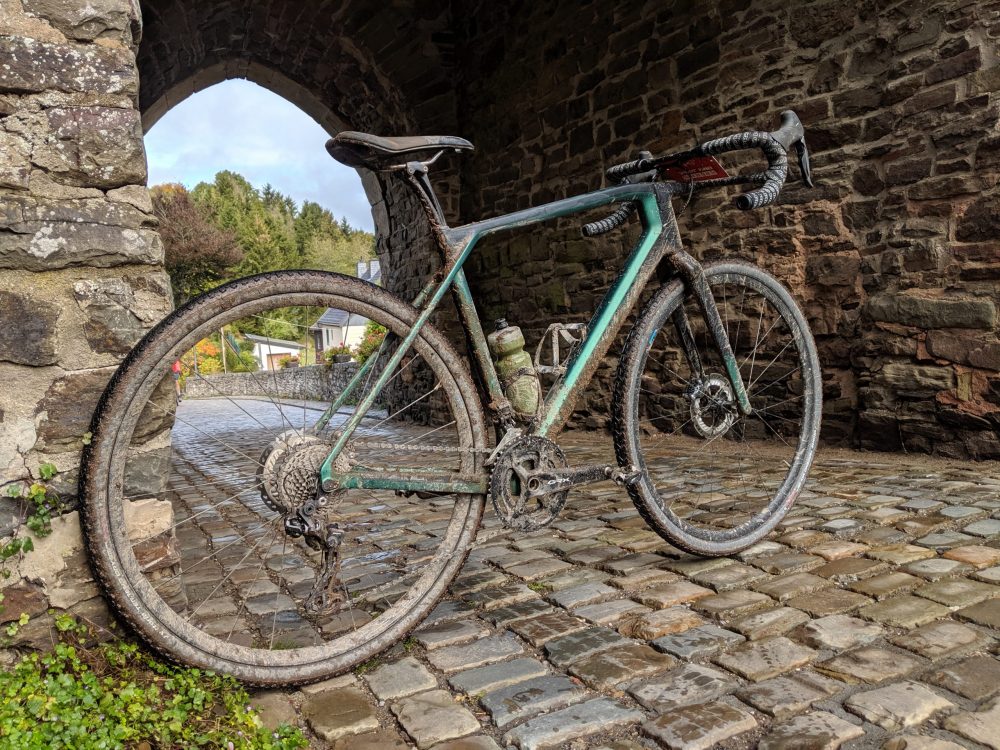Should your next bike be a gravel bike?

There's no denying that gravel cycling has taken the bicycle world by storm. It's what everyone is talking about.
From humble beginnings on the endless unpaved roads in North America - or arguably half a century ago in northern England with the Rough Stuff Fellowship - gravel riding (its trendy 21st century name) is more popular than ever.
In the UK at least, it can seem that the term 'gravel' is rather misleading. Sure, there are certainly are gravel roads here (we're looking at you, valleys of South Wales, forestry plantations of Scotland and the ancient Roman roads of Yorkshire) but they're much less common than the expansive gravel road networks in the US.
What we do have, however, is a vast network of bridleways, byways, tracks, common land and moor, all which can be linked up with sections of tarmac.
We don't really have pure 'gravel' riding, but more mixed surface, multi terrain, off-road or one of my favourites - mixed media.In reality, British gravel riding - similar to most European 'gravel' - is actually mud, dust, roots, rocks, grass and sand.
If you compared it to mountain biking - or at least what MTB has become today - you'd say it was a tamer version of off-road riding that puts exploration ahead of adrenaline. Indeed, many claim that gravel riding is today what mountain biking was not so long ago in the Eighties.
What are gravel bikes?

In order to understand why you might want to buy a gravel bike, let's take a look at what they fundamentally are. In essence, you're looking at a drop-bar bike with wide tyre clearance, wide gear ratios and a frame geometry somewhere between standard road bike and cross-country mountain bikes.
Although all gravel bikes share these three factors, there's a great range within the category, from racing orientated aerodynamic carbon fibre whips to bikes that push the limits into MTB territory, as well as robust builds designed to carry you and your kit for thousands of miles.
So why might you be interested in buying a gravel bike? Let's consider three of the reasons why.
Exploration by bike

Gravel bikes are enablers. See that track you've passed by a thousand times while loyally clinging to the tarmac? Without even going far from your front door, you can find a whole new range of places to ride and explore, even in cities.
That average speed (and, linked to that, your computer screen) you've always fussed over can be forgotten about. This is more about seeking out new terrain, new views and new challenges. It's an adventure.
One of the best parts of riding off-road as a beginner is the steep learning curve. If you stick with it, you'll find yourself clearing obstacles that you couldn't a few rides ago, daring yourself to ride that steeper bank or navigate those trickier roots. The buzz that comes from achieving something new - however small - is a fantastic feeling.

Once you've started to get used to taking your gravel bike off-road, to the sensation of your wheels slipping around underneath you in mud and the dust clouds on dry days, you might want to venture further afield.
Whether in the UK or beyond, this multi-media gravel riding can take you to some absolutely mind-blowing places. We're talking miles from civilisation, remote hideaways and far from traffic. It's a world away from your standard road loops or trail centre riding.
A new racing challenge

You might have raced road, cyclocross or XC for years, but need something new and stimulating to turn your hand to.
It may seem like it, but the gravel racing scene certainly isn't limited to North America. A rapidly growing network of gravel events across Europe bring not only social events and group rides but also some really exciting competitive racing too.
There are a number of different racing formats when it comes to gravel riding and racing. Straight forward A to B races are favoured by some, like the Gravel Fondo Cymru, and a growing number of these are over really long distances.
Gritfest and Grinduro take an Enduro-style format, meaning that you are only timed for certain segments and the rest of the loop you can ride at a more social pace with your friends.

There are even some new multi-day stage races popping up too, and a lot of these involve weekend camping and a festival-like atmosphere, with many providing activities for kids too for a great family break. Another reason to get excited about a post-pandemic world.
If you're finding your current racing is going a bit stale, why not give gravel racing a go?
Versatility

Somewhere between a road bike and a mountain bike, you could argue that gravel bikes are essentially hybrid bikes with a sexier name.
Although most are optimised for use on off-road tracks and trails, there's nothing stopping you adapting your gravel bike for a number of different uses.
With a set of slick tyres, your gravel bike is suddenly pretty close to a road bike. Sure, it won't be as fast as an aggressive aero bike set up, but does that matter?
If you're limited on space and you can only have one bike, many people opt for a gravel bike with two different wheelsets that they can switch out easily, essentially giving two different bikes for the space of one. It's cost-effective, too.
If you'd like to try cyclocross racing, you've got the space for wide, knobbly tyres and easier gearing to help you in tough mud without having to fork out for another bike. In amateur racing, you'll see quite a few emergency pit bikes that are actually gravel bikes.
Looking for a great winter road bike to keep your favourite ride in pristine condition? Look no further. With huge tyre clearance on gravel bikes, you can comfortably fit full mudguards as well as wider tyres which will help with the mucky winter conditions.
If you're riding with your friends or clubmates, though, you might want to consider your gearing and opt for a more road-orientated gravel bike, just in the event that you might spin out of gears when the pacing ramps up.
The same reasons are why gravel bikes also make for great commuter bikes. There's space for guards, often mounts for racks, and the wider tyres means that they're a really stable ride, without being slow.
And, if you need a little bit of assistance or don't want to arrive to work too sweaty, you'll also find a growing number of electric gravel bikes.
Should your next bike be a gravel bike?
If you've got this far, we hope that we've convinced you by now. If you're looking to try something new, a bike that can broaden your horizons or a first bike that you can do a lot of different things with, it's hard to argue against buying a gravel bike.
The hardest part now will be choosing the best one.
The latest race content, interviews, features, reviews and expert buying guides, direct to your inbox!